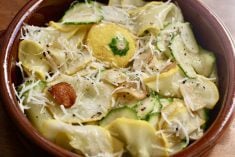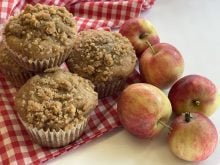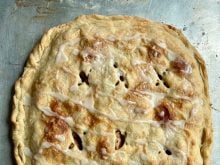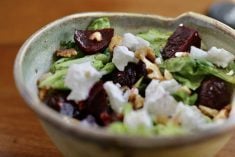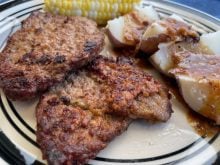At the beginning of the 21st century, scientists, governments and individuals were becoming more aware of the nutrients in foods and how they affected health.
Scientific and medical research focusing on how lifestyle and food contributed to certain diseases, such as heart disease, stroke, diabetes and cancer, began to recommend lower fat, higher fibre diets.
Fats were being identified as “healthy” and “unhealthy.” “Healthy” fats were unsaturated fats, including monounsaturated and polyunsaturated fats. Food that contains these fats include olive, canola, sunflower, soy and corn oil as well as nuts, seeds and fish.
Read Also

Alberta cracks down on trucking industry
Alberta transportation industry receives numerous sanctions and suspensions after crackdown investigation resulting from numerous bridge strikes and concerned calls and letters from concerned citizens
“Unhealthy” fats were trans fats and saturated fats. Trans fats were primarily in processed foods, and due to health concerns, most have now been eliminated from many foods. Saturated fats are found in red meat, butter, cheese and ice cream as well as some plant-based fats such as coconut oil and palm oil. They are best consumed in moderation.
In Canada, food processors were encouraged to voluntarily add nutrition labelling to prepackaged foods in 2000, and by 2007, it became mandatory for all prepackaged foods to have a nutrition label.
The labels were designed to be easy to find and simple to read and had to include the product’s serving size, calories and percentage of the daily value (%DV) required for each of 13 core nutrients: fat, saturated fat, trans fat, cholesterol, sodium, carbohydrate, fibre, sugars, protein, vitamin A, vitamin C, calcium and iron. The labels were updated in 2017.
Some individuals were choosing vegetarian diets to reduce their meat consumption, while others were careful about what foods they ate due to allergies such as peanuts or intolerances such as lactose or gluten.
Generally, there was an increasing awareness of how food could affect health. This created a demand for more food and nutrition information, and commodity groups such as the canola growers and pulse growers developed pamphlets, cookbooks and websites to provide information to interested cooks and consumers.
Home cooks began looking for ways to adapt family favourite recipes to make them healthier.
One way was to substitute canola oil, which is lower in saturated fats and contains no trans fat, for butter, margarine or melted solid fat in baking recipes. Because butter contains some water, the amount of oil used is about 25 per cent less, so the total fat in the recipe is reduced.
The following chart is from canolaeatwell.com, a partnership between Alberta Canola, Manitoba Canola and SaskCanola.
Canola oil substitution
Solid or melted fat Canola oil
- 1 c. (250 mL) 3/4 c. (175 mL)
- 3/4 c. (175 mL) 2/3 c. (150 mL)
- 1/2 c. (125 mL) 1/3 c. (75 mL)
- 1/4 c. (60 mL) 3 tbsp. (45 mL)
*Note: This conversion works well for most baked goods and makes most baked goods moister with a softer texture. For baked goods such as cookies that use solid fat as a leavening agent, this conversion will not always work. For cookies, it can be best to select a recipe that was developed with this conversion already made.
Pulses such as lentils, dry peas, chickpeas and beans were also becoming more popular because they are rich in protein and fibre and low in fat. Research had shown that eating pulses could lower blood cholesterol, reduce blood pressure and help with weight management, all risk factors for heart disease, as well as help to manage blood sugar levels for diabetics.
Canola lentil chocolate chip cookies
- This traditional family favourite recipe has been adapted to canola oil, a healthier fat, and lentils were added to increase the fibre and protein content.
Yields 48 cookies
- 3/4 c. canola oil 175 mL
- 1 egg
- 1/4 c. white sugar 60 mL
- 1/2 c. brown sugar 125 mL
- 2 tsp. vanilla 10 mL
- 3/4 c. lentil purée (see below) 175 mL
- 1 c. whole wheat flour 250 mL
- 3/4 c. all-purpose flour 175 mL
- 1 tsp. baking powder 5 mL
- 1/2 tsp. baking soda 2 mL
- 2 c. rolled oats 500 mL
- 3/4 c. semi-sweet chocolate chips 175 mL
- or 3/4 c. chopped nuts
- or 1/3 c. of each chocolate chips and nuts
Lentil purée:
- 1 c. lentils 250 mL
- 2 1/2 c. water 625 mL
Wash and sort dry lentils, place in a pot and cover with water. Simmer 40 to 50 minutes until soft. Drain reserved stock. Blend lentils, adding only enough stock to make a purée, similar to canned pumpkin. Makes 1 1/2 to two cups (375 mL to 500 mL). Freezes well.
Preheat oven to 350F (180C).
In large bowl, whisk together canola oil, egg, white sugar, brown sugar, vanilla and lentil purée until well combined.
In second bowl, combine whole wheat flour, all-purpose flour, salt, baking powder and baking soda. Add dry ingredients to canola oil mixture, along with oats and chocolate chips. Using large spoon, mix all ingredients together, just until moistened.
Roll into about one inch (2 cm) balls and place on parchment-lined cookie sheets about two inches (5 cm) apart. Flatten slightly with a fork.
Bake for eight to 10 minutes or until cookies are golden brown. Cool cookies for about five minutes on baking sheets. Transfer to wire racks to cool completely.
Adapted from Judy’s Chocolate Chip Cookies from canolaeatwell.com and Lentil Oatmeal Chocolate Chippers.
Among the dietary recommendations for health was the eating of at least five fruits and vegetables per day, based on Canada’s Food Guide at the time. Serving raw vegetables with a dip is a way to make them more appealing.
Chickpea and black bean hummus
Hummus is a staple Middle Eastern dish that can be served with raw vegetables, pita bread or crackers.
- 1-19 oz. can chickpeas drained, save liquid 540 mL
- 1-19 oz. can black beans drained and rinsed 540 mL
- 2 cloves garlic minced 2
- 3 tbsp. lemon juice 45 mL
- 1/2 tsp. salt 2 mL
- 2 tbsp. tahini 30 mL
- 2 tbsp. virgin olive oil 30 mL
Place chickpeas and black beans in blender or food processor with garlic, lemon juice, salt, tahini and oil. Puree, adding just enough reserved chickpea water to make a creamy, smooth mixture.
Add 1/4 to 1/2 teaspoon (1-2 mL) hot pepper sauce, cumin or chili powder as desired.
Serve in a bowl with pita cut into wedges or with tortilla chips. Garnish top of humus with a light sprinkling of chili powder.
Note: Tahini (tah-HEE-nee) is a thick paste made from ground sesame seeds and is used in Middle Eastern cooking. It is often found in the peanut butter section of the grocery store. Unsalted, unsweetened peanut butter may be used to replace tahini.
The Western Producer ran a Millennium Main-dish Casserole Recipe Contest and had 241 recipes submitted. The first-place recipe was from Diane Dietz of Buchanan, Sask., for orange walnut chicken.
Orange walnut chicken
This chicken has a wonderful citrus flavour. Serves 4.
- 3 tbsp. (frozen) orange juice concentrate 45 mL
- 3 tbsp. canola oil, divided 45 mL
- 1 tbsp. soy sauce 15 mL
- 1 garlic clove, minced
- 4 boneless, skinless chicken breast halves
- 1/2 c. walnuts, coarsely chopped or slivered almonds or halved pecans 125 mL
- 1 tbsp. butter or margarine 15 mL
- 4 green onions, thinly sliced
- 1/2 c. orange marmalade 125 mL
- 1/2 c. orange juice 125 mL
- 1 tbsp. orange peel, grated 15 mL
- 1 tbsp. lemon peel, grated 15 mL
- 2 tbsp. honey 30 mL
- 1/2 tsp. salt 2 mL
- 1/8 tsp. pepper 0.5 mL
- serve with hot rice
In a large resealable bag, combine orange juice concentrate, two tablespoons (30 mL) oil, soy sauce and garlic. Add chicken, seal bag and turn to coat. Refrigerate for two to three hours. Remove chicken. Reserve marinade.
In a skillet, cook chicken in remaining oil until juices run clear.
Meanwhile, in a saucepan sauté walnuts in butter until lightly browned. Remove and set aside. Set aside 1/4 cup (60 mL) green onions for garnish. Add remaining onions to saucepan sauté until tender.
Add reserved marinade and orange marmalade, orange and lemon juice and peel, honey, salt and pepper. Bring to a rolling boil. Boil for two minutes. Reduce heat, simmer uncovered for five to 10 minutes or until sauce reaches desired consistency.
Serve chicken over rice and top with sauce, reserved walnuts and onions.
Betty Ann Deobald is a home economist from Rosetown, Sask., and a member of Team Resources. Contact: team@producer.com.






